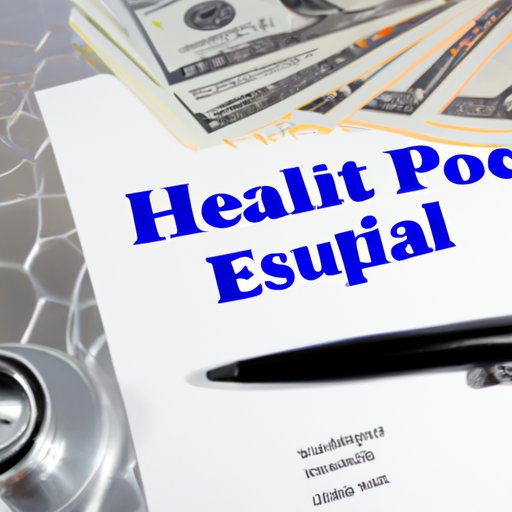Introduction
A High Deductible Health Plan (HDHP) is a type of health insurance plan that offers lower monthly premiums in exchange for higher out-of-pocket expenses. HDHPs are an alternative to traditional health insurance plans, which typically have higher premiums but lower deductibles. In this article, we explore the benefits and drawbacks of HDHPs, their requirements for qualification, their impact on healthcare costs and their impact on consumers.

Benefits and Drawbacks of HDHPs
HDHPs have both advantages and disadvantages compared to traditional health insurance plans. The main benefit of an HDHP is the lower monthly premium. According to a study by the Kaiser Family Foundation, “the average annual premium for employer-sponsored family health coverage was $20,576 in 2020, whereas the average deductible for an individual HDHP was $4,458.” This means that individuals can save thousands of dollars per year in premiums by opting for an HDHP.
However, there are also drawbacks to HDHPs. Since these plans have high deductibles, individuals must pay out-of-pocket for any medical care they receive until they reach their deductible. This can be financially difficult for those who need frequent or expensive medical care. Additionally, since HDHPs have limited coverage, individuals must pay for any care that is not covered by their plan.

Requirements for Qualifying for an HDHP
In order to qualify for an HDHP, individuals must meet certain financial eligibility criteria. According to the Internal Revenue Service (IRS), the minimum deductible for an HDHP is $1,400 for an individual and $2,800 for a family. Additionally, the maximum out-of-pocket expenses for an HDHP cannot exceed $7,000 for an individual and $14,000 for a family. These limits include deductibles, copayments and coinsurance.
Additionally, HDHPs must provide certain levels of coverage. Under the Affordable Care Act (ACA), HDHPs must cover essential health benefits such as preventive care, hospitalization, mental health and substance abuse treatment, and prescription drugs. HDHPs may also offer additional coverage for vision and dental care.
Impact of HDHPs on Healthcare Costs
HDHPs have been shown to reduce healthcare costs. A study conducted by the American Academy of Family Physicians found that HDHPs led to a 5% decrease in spending on healthcare services. Additionally, a study by the RAND Corporation found that HDHPs led to a 7% decrease in overall spending on healthcare.
However, there are some limitations to the cost savings offered by HDHPs. For example, the RAND study found that HDHPs did not lead to a significant reduction in spending on prescription drugs. Additionally, the study found that HDHPs had no effect on the utilization of emergency room services.

Impact of HDHPs on Consumers
HDHPs can have a significant impact on consumers, both positive and negative. On the positive side, HDHPs can lead to lower out-of-pocket expenses for individuals who only require occasional medical care. However, for individuals who require frequent or expensive medical care, HDHPs can lead to higher out-of-pocket expenses.
Additionally, HDHPs can limit access to care. Since these plans have limited coverage, individuals may not be able to access certain types of care, such as specialty care or experimental treatments. Additionally, since HDHPs have high deductibles, individuals may be reluctant to seek care due to the cost.
Conclusion
High Deductible Health Plans (HDHPs) offer lower monthly premiums in exchange for higher out-of-pocket expenses. While these plans can lead to significant cost savings for individuals who require only occasional medical care, they can also lead to higher out-of-pocket expenses and limited access to care for those who require frequent or expensive medical care. Ultimately, it is important for individuals to weigh the benefits and drawbacks of HDHPs before deciding whether or not to enroll in one.
(Note: Is this article not meeting your expectations? Do you have knowledge or insights to share? Unlock new opportunities and expand your reach by joining our authors team. Click Registration to join us and share your expertise with our readers.)
